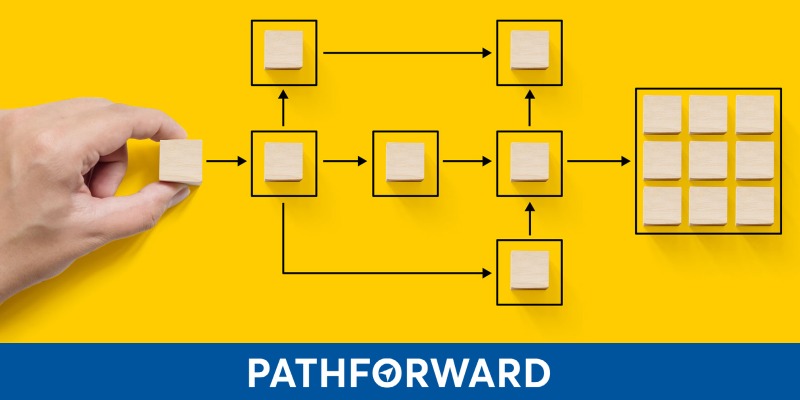Written by Keith Nickoloff
Originally posted in In-Plant Impressions
If you could redesign the in-plant model for today’s world, what would you do differently? Which services would you include?

The in-plant was chartered to be fast, secure and competitive. High-quality print was delivered at a low cost based on perfected utilization. But that’s not the reality anymore; work is not flowing to the in-plant as it should. Rather, volume is staying with the office fleet, where it is perceived as free. Or, it’s going to third-party service providers who know how to sell and serve.
Sixty years later, would we do it the same way? If you had an opportunity to design an in-plant operation starting with a clean sheet, what mindset and what services would you consider to be essential for success?
What if you were evaluated not only by what you produced or manufactured, but by the value you provided and the volume you managed as the organization’s single point of competency for all print-related services? What if we were to re-define the in-plant not as a profit center, but instead as a digital center of excellence (COE) in service to our organizations?
Service-oriented, highly skilled resources can inspire confidence across the organization and serve the company more proactively and holistically. I believe that managing the traditional way, as a profit center, has been the unintended bane of the in-plant. It’s the worst thing that has ever happened to it.
1.0: New Business Model Required
In many in-plants around the world, print shop capacity exceeds actual utilization. In other words, excess capacity abounds and yet utilization is the number one determinant of profitability and competitiveness. When the in-plant 1.0 charges print users and their departments for their printing work, it creates an unnecessary decision in the mind of the print user, who will choose the “free” option every time.
When people send documents to their office printers, there’s no price attached to the job and therefore the job is perceived as free. That new multi-function device across from the water cooler makes printing so quick and easy. It’s right there, ready to serve any impulse to print. The reality is that office printers win the convenience game and they have won even bigger since managed print services (MPS) has been branded and marketed as the greatest thing since PostScript.
Again, the decision for the end user is made simple: “I’ll just do my production work in the office, where it’s ‘free’ and ‘fast.’” That’s bad news for the in-plant and bad news for the organization as a whole. With today’s shorter run rates, less complex print jobs and quick turnaround times, people aren’t going to take advantage of the in-plant if it charges them and if they also need to leave their office space.
For the in-plant to be successful, it has to get that work back. It has to compete on a level playing field with office print. In other words, it needs to be “free.” Track it, manage it well and assign costs, but don’t burden the print user with a decision that too often ends badly for the in-plant.
You may be thinking that this “free” concept is crazy. Is it? I submit that it’s much saner than allowing every employee to print whatever, whenever and wherever, with zero accountability and no constraints. If you do it right, with senior management support, you’ll win. If you think the “free” concept represents too much change for your organization, then at least charge back office print and in-plant services fairly to create a level playing field.
2.0: A Holistic Strategy
In our clean sheet redesign of the in-plant, wouldn’t it be wise to start with a strategy — one that begins with the facts via a thorough baseline assessment? This strategy should span the entire enterprise and incorporate all internal printing operations — the office fleet, the in-plant, the data center print and mail operation, and all work being procured and produced externally.
This strategy would include the formation of an invested governance team with leaders from finance, facilities, operations, IT, procurement, corporate communications and HR.
If you are large enough to have a two-comma budget today, then the new model should translate to a two-comma annual save as you achieve COE status and become The Source of all print. In our experience, senior leaders will be more than happy to be a part of this; after all, how many two-comma saves does a company have?

Shift Your Workload
Do you really need the commodity print — the business cards, stationery, envelopes, business forms, etc.? We suggest shifting this lower-value offset work to someone who does this 24/7. Yes, align with an external print services provider and sell your offset book of business to them. Invest the money you get from this sale into what you really aspire to be — masters of your organization’s brand, content, creative, variable and personal digital color, cross-channel communication and business analytics.
This enables the in-plant to regain the high-value work, and the work that involves information that should be secured (for example, work that entails customer, employee or alumni lists or other sensitive information). You will grow your capabilities to include sourcing excellence and vendor management. In essence, you will become your company’s marketing services provider.
Do one more thing: get in front of any managed print services fleet RFP. How can any organization optimize its office fleet without considering the in-plant? And how can any organization optimize the in-plant without considering work that is produced and procured externally?
These areas of print are all interrelated and should be treated holistically. If the organization is committed to the in-plant and its utilization, then the composition of the fleet should be down-featured. If the in-plant doesn’t exist or is being phased out, then office devices should be feature-rich.
Focused Operational Efficiency
To lower your total cost of ownership (TCO), you need to take advantage of your fixed costs; you need to fully utilize them. Again, optimal utilization is essential to driving down TCO across all three print environments — in the office, the in-plant and externally sourced print.
Here’s what we’ve experienced. There is as much savings available in achieving sourcing excellence (getting the lowest prices) as there is in achieving process excellence (achieving the lowest costs). And, the savings available from world-class external print sourcing can generally fund the total budget of the office fleet and the in-plant.
Achieving this digital COE model for the in-plant involves several important factors. First, a service mindset has to permeate your team. Hire the best customer support, project management, technical support and analysts; use interns and students; and recruit the best sales people you can find — your competition does, and so should you. Prioritize the high-value, secure digital variable color work and be as accessible as possible to make things easy for your customers.
Size your production capability to meet your troughs, not your peaks. Remember that optimal utilization is key to achieving the lowest TCO. Partner with print service providers with similar culture, technology and workflow processes to meet the overflow demands of your peaks.
Master of Your Domain
Learn to serve, sell, source and manage vendors. Make your operation “free.” It’s in everyone’s best interest, especially yours. Do these things and you will never be replaced by outsourcing because you will be the master of your domain. You will own all important facets of the work.
It’s rare that any outsourced service can compete with your intimate knowledge of your customers and their needs — and with speed that others can’t touch. They certainly can’t compete with your desire to see your organization succeed. The advantage is yours, if you seize it.

Yes, the COE model is different. It’s sustainable. It’s competitively superior. It’s aligned with the realities of today and the holistic priorities of your organization. It has a future. The old model may not.
Take The First Step
If you’re not thinking about your print strategy holistically, you may be paying millions of dollars more every year than needed. However, developing a strategy and utilization of fixed assets can lead to an enterprise saving between 35-65%.
If you are interested in these types of savings and driving bottom-line impact, the model below is how and what PathForward does in helping organizations like yours find the best-tailored strategy for their goals, priorities, and requirements.
We have helped organizations like yours save over $750M.
